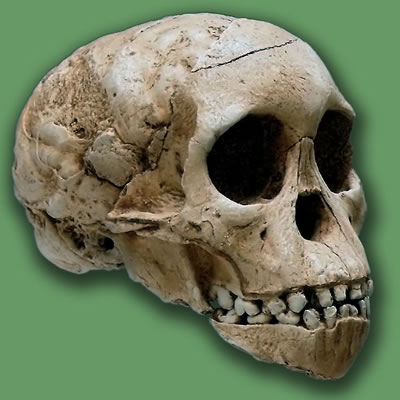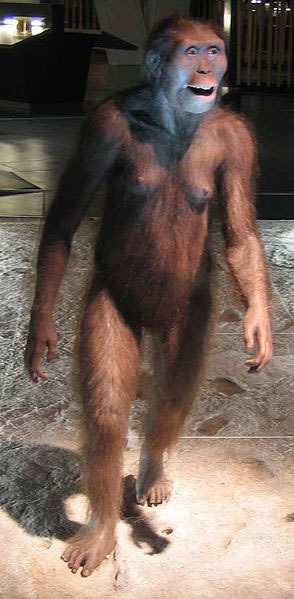Australopithecus was a type of hominid, or great ape - a member of the family of primates that includes gorillas, chimpanzees, orangutans and humans.
Australopithecus was among the earliest known hominids known to walk on two legs.
The Australopithecines are divided into two groups: the Gracile Australopithecines and the Robust Australopithecines.
 The Gracile Australopithecines were around four feet tall. Their brains weren't much larger than those of gorillas, but their bodies were smaller.
The Gracile Australopithecines were around four feet tall. Their brains weren't much larger than those of gorillas, but their bodies were smaller.
The Robust Australopithecines belong to the genus Paranthropus, and are thought to have descended from the Gracile Australopithecines.
They were much larger than the Gracile Australopithecines. They had big jaws with large, flat molar teeth.
In 1924, the 2 and a half million year old skull of a child Gracile Australopithecine, of the species Australopithecus africanus, was discovered in a limestone quarry, known as Taung in South Africa.
The child, which was about 3 years old when it died, became known as the Taung Child.
The Taung Child was probably killed by a large bird, such as an eagle. It has marks on its skull and on its eye sockets that resemble marks that are found on modern primates that are killed by predatory birds.
Half of the skeleton of a female Australopithecus afarensis, another species of Gracile Australopithecine, was found at Hadar in Ethiopia in 1974.
The specimen was named Lucy, because the paleontologists who discovered her were listening to the Beatles' song, "Lucy in the Sky with Diamonds", when she was found.
Lucy, who lived over 3 million years ago, was between 3 ½ and 4 feet tall.
 She was about 20 years old when she died and was already showing signs of arthritis.
She was about 20 years old when she died and was already showing signs of arthritis.
Lucy's brain was about one fourth to one third the size of a modern human's. Her hipbones show that she stood upright and probably walked like a modern human being.
Lucy and other Australopithecus fossils show that the early relatives of human beings began walking bipedally (upright, on two legs) before their brains became larger than those of other great apes.